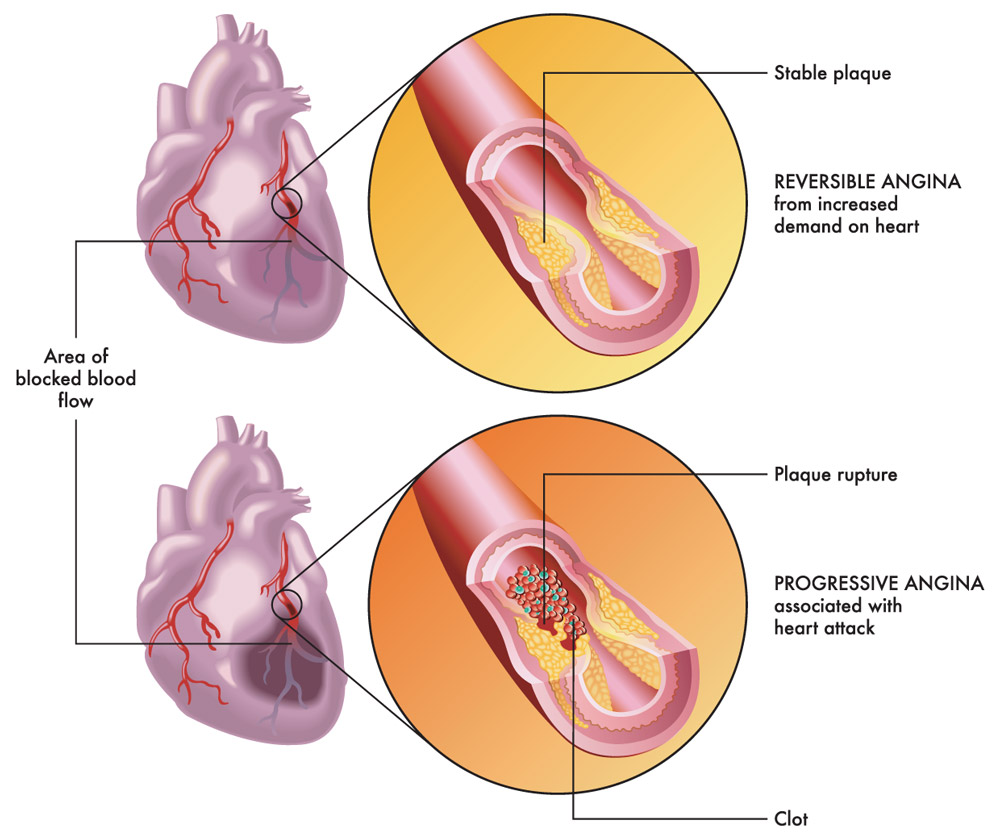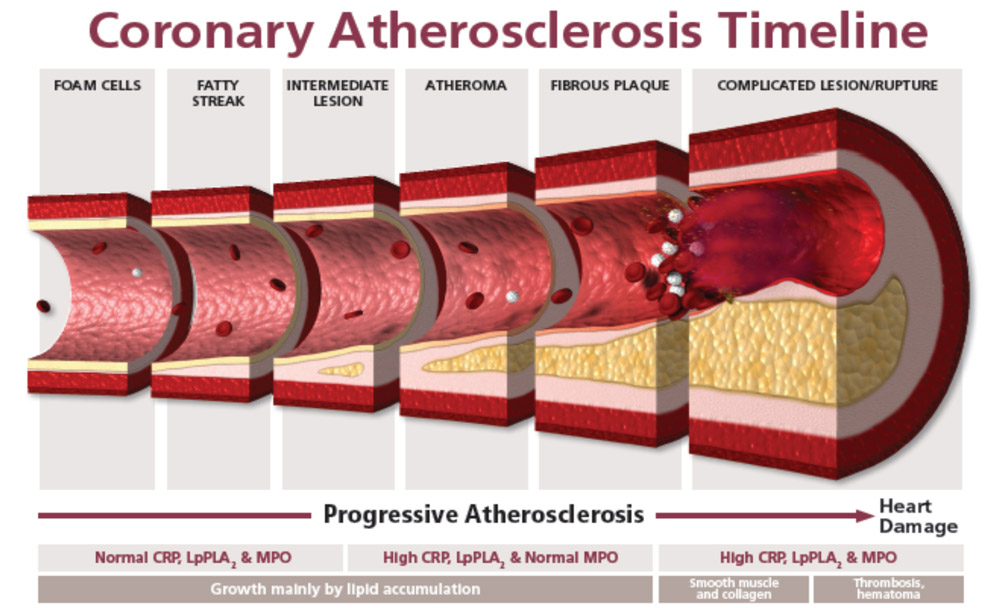- Home
- About Us
- Advanced Testing
- Nutrition & Self-Care
- Further Learning
- New Member Info
- Contact
Inflammation is ultimately the source of all cardiovascular (CV) disease, but it is also the driving force behind other serious illnesses like cancer, autoimmune disease, and even dementia. When the arteries are inflamed, cholesterol particles can “stick” and accumulate more easily into the arterial walls, eventually forming plaques that can cause a heart attack or stroke.
Of course it is important to treat high cholesterol, blood sugar, and blood pressure in order to lower the risk of CV disease in a patient . . . but the ultimate goal should be focused on fixing the source of the problem, which means shutting down any inflammation. In 2015, a peer reviewed study published in the Journal of Medical Economics proposed that if medical providers would order inflammation testing routinely on patients, we could decrease thousands of heart attacks and strokes, and save millions of healthcare dollars. Read more HERE. 3

There are two ways someone can have a heart attack. The first is from obstructive coronary artery disease (CAD). In these patients, plaque builds up in the arteries over years and eventually obstructs the blood flow and oxygen to a part of the heart. These patients are more likely to fail a stress test with a cardiologist because exercise induces symptoms. However, traditional stress tests only identify late-stage obstructive CAD, typically in patients with arteries that are more than 70% blocked. In symptomatic patients, such blockages warrant immediate medical attention (through a stent or coronary artery bypass surgery). However, these interventions do not always correlate with improvement in long-term cardiac outcomes. In the first year after a heart attack, women are 50% more likely to die than men, and nearly twice as likely to have a second heart attack. 4
The second way a patient can have a heart attack is from soft vulnerable plaque in the arteries that suddenly ruptures and causes a blood clot - this clot then obstructs blood flow to a part of the heart. 60% of heart attacks occur from ruptured plaques, and most of these plaques come from arteries that are less than 50% occluded. 5 These patients could pass a stress test one day and then have a heart attack the next day from a ruptured plaque! Read more HERE.
Half of women and two thirds of men over the age of 40 are already affected by CV disease, so in order to beat the number one killer in our nation, we must identify and treat these intermediate risk patients sooner. 1Unfortunately, many patients continue to bare residual CV risks even after “appropriate” treatment is implemented (based on current national guidelines). Many trials have demonstrated this, even in patients with LDL cholesterol less than 70 (see data from the Improve-It trial and Prove-It TIMI 22). 2

The schematic below shows the progression of atherosclerosis (plaque build-up in the arteries) . . . and it all starts with inflammation.

In the earliest stages of atherosclerosis, inflammation biomarkers measured in the blood (hs-CRP, LpPLA2, and MPO) are normal.
In the intermediate and later stages of atherosclerosis, hs-CRP is elevated.
In the presence of active arterial wall plaque, LpPLA2 is increased.
And in the presence of unstable plaque (that could easily rupture), MPO is increased.
When all three markers are elevated, the risk of a near-term CV event is very high (about 15% over the next 6 months). So measuring these biomarkers is essential if we want to identify the warning signs for plaque rupture (that could lead to a sudden CV event in even asymptomatic patients).
Do something today for a better tomorrow!
Make an appointment now for advanced testing. We are here to help.
REFERENCES
1 – https://www.ncbi.nlm.nih.gov/pmc/articles/PMC2639398/
2 – https://www.ncbi.nlm.nih.gov/pmc/articles/PMC6403155/
3 - M. S. Penn, M. A. Yenikomshian, A. K. G. Cummings, A. Klemes, J. M. Damron, S. Purvis, M. Beidelschies & H. G. Birnbaum (2015) The economic impact of implementing a multiple inflammatory biomarker-based approach to identify, treat, and reduce cardiovascular risk, Journal of Medical Economics, 18:7, 483-491, DOI: 10.3111/13696998.2015.1029490
4 - https://www.texasheart.org/heart-health/heart-information-center/topics/women-and-heart-disease/
5 - https://www.ncbi.nlm.nih.gov/pmc/articles/PMC3760546/